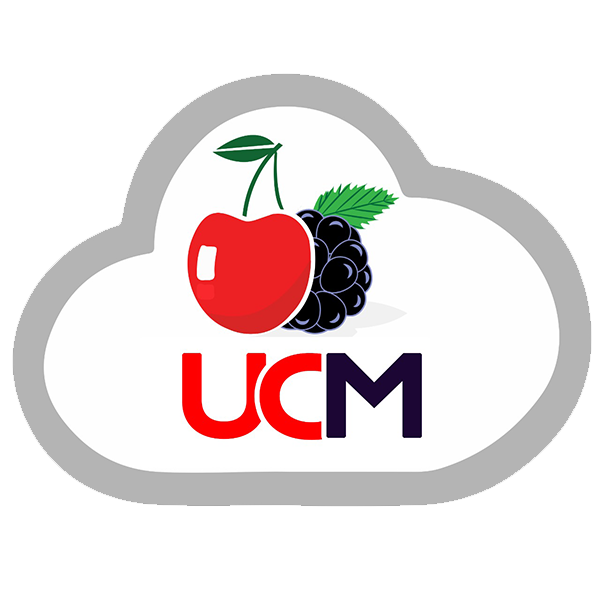Boost Efficiency and Customer Service with Virtual Call Center Solutions
Why is It Worth Investing in Virtual Call Center Solutions?
Did your sales reps or team of agents spread out globally, and do they need to connect regularly with clients, employees, or prospects? If so, Virtual Call Center Solutions can effectively manage your business needs, boost service levels, and train new hires. It also means that your employees are not restricted to a centralised office location or time zone like in a traditional call centre environment. They can manage inbound and outbound calls and other requests from any location on demand without any hassle. Do you want to know how? Keep reading the blog to explore more about these solutions.
What are Virtual Call Center Solutions?
As their name implies, remote or virtual software allows you to control customer service operations remotely. Virtual call centres contain customer service and sales agents who work from different locations. The need for virtual solutions increases when your customer service demands increase or your business grows. Due to these innovative, resilient, and scalable solutions, many enterprises are switching from traditional on-site software to ensure their call centre operations can continue seamlessly, allowing agents to work in a hybrid or remote work environment. Thus, if you are considering expanding your business, transitioning from physical software to a virtual solution is smart.
Which Functions and Tasks Does the Virtual Call Center Manage?
- Customer Service: The main role of every call center is to assist, address, and resolve customer concerns. Remote teams can efficiently manage all these tasks through cloud or virtual solutions.
- Order Processing & Placement: Virtual service providers assist customers from order placement to final delivery. They offer guidance in any step the customer finds challenging during the buying process.
- Technical Service: Remote agents can also resolve technical service issues. They can help customers with service renewal, upgrades, product use, or returning the system to normal.
- Sales & Upselling: These remote services are also involved in sales activities. Sales and marketing teams make outbound calls to prospects and regular customers to address issues and promote product features.
- Appointments & Reminders: Many service-oriented businesses like hospitals and restaurants need appointments. Cloud Call Centers can use virtual solutions to send reminders and update schedules to reduce the likelihood of no-shows.
- Market Research & Surveys: Collecting customer feedback is important for many companies to improve the quality of service or know about market trends and customer preferences. They can hire call centre services to streamline the process.
Comparing Virtual & Traditional Call Center Systems
Call centers are the heart of customer service operations. As a business evolves, its customer service needs also grow with it. Traditional and virtual call center software have distinct advantages depending on your business requirements.
1. Traditional Call Center Software
They typically function in physical locations that only facilitate on-site agents. This setup lets companies supervise their customer service operations and promote collaboration closely. Meanwhile, the system also gives them more control over their business operations. However, you may have to invest significant costs to maintain physical space and equipment. Additionally, they limit the talent pool to local agents.
2. Virtual Call Centre Systems
Cloud technology has transformed the way businesses manage their routine operations. Virtual or cloud solutions allow your teams to work from anywhere, regardless of their physical location, and manage customer interactions efficiently. They are highly flexible, cost-efficient, and scalable solutions that facilitate companies to scale up or down considering demands. However, supervising, communicating, and maintaining dispersed teams can be challenging for companies.
How to Pick the Best Call Center System?
Before investing in any virtual system, you should consider the following points to choose the best system and value your business.
- Quick Setup: Always choose the system that saves time and reduces your burden. The VoIP call center system needs hardware, physical workstations, and wiring. Meanwhile, installing virtual software is less complex than an onsite system as you can complete the installation within a few minutes and it becomes functional immediately.
- Greater Flexibility: You may have to expand or contract your workforce with fluctuating business demands. It can overburden you financially. Cloud solutions offer easy scalability, and you can add or remove agents quickly.
- Easy to Use: The traditional call center software needs to be designed to meet customer needs. Meanwhile, virtual solutions contain intuitive and unified interfaces that enable teams to work cohesively.
- Contains A Complete Package: Virtual systems are easy to use and install but it does not mean they offer limited features. Being a cloud-based platform, the software provides a standard setup including click-to-call, interactive voice response and voicemail greetings.
- Countless Integrations: Cloud or virtual call centre software offers a host of integrations with other apps and tools. These integrations make the delivery of routine tasks easier.
- Security: Cloud software stores your data on a server, providing excellent disaster recovery protection. The service provider ensures the security of all sensitive business data with only authorised people can access the data.
Top Advantages of Going Virtual for Businesses
1. No Geographical Limitations
Companies can hire agents globally to provide top-notch customer service experiences. You can employ the best and most professional staff to manage your business operations. Meanwhile, companies can also keep their business open around the clock, even after local closing hours, for a more satisfactory customer experience.
2. Reduce Upfront Costs
Cloud or virtual call centres are relatively inexpensive solutions than traditional setups. Buying and managing local servers or investing in PBX and phone terminals are the initial expenses. You can save these expenses through cloud solutions.
3. Mobility & Lower Turnover
Cloud systems facilitate remote working so that your teams can work from home, they don’t need to travel. This saves their time and lowers stress and turnover rate. Invest in cloud solutions to make your staff stress-free and more efficient.
4. Eco-Friendly Option
Having a virtual solution is the smartest and most eco-friendly option for companies. Avoiding daily commutes, hardware, and physical offices reduces carbon footprint. The availability of the cloud eliminates the need for paper products and hardware, which is beneficial for your business and the planet.
Closing Thoughts
Finally, digital customer expectations are constantly evolving today. Companies are facing the challenges of handling high call volumes while maintaining quality. Virtual IVR Call Center Solutions are an effective way to transform customer service and increase efficiency. Contact CherryBerry UCM to choose the best software and drive your business forward on a competitive curve.
Inbound vs. Outbound Call Centers: Unveiling the Key Differences
How Do Inbound Services & Outbound Call Centers Provide Efficient Solutions For Your Business?
Today, customers have many options to reach a business, like chatbots, email or social media. You may think digital nomads rarely call a company for products and services. However, this is different because a phone call is still preferable to resolve issues or reach potential leads and prospects. Hence, enterprises must increase their capacity to manage incoming and outgoing calls or consider investing in specialised inbound and Outbound Call center solutions. Let’s find the key differences between each type of call centre to increase operational performance.
What are Inbound Call Center Services?
These specialised call centres receive incoming calls to resolve issues and questions from existing customers. In other words, customer service is an important function of inbound services. Companies manage their inbound calling operations internally or outsource these processes to external service providers to enhance operational efficiency. Inbound agents answer incoming calls seeking help or information to solve their issues. Inbound services do more than answer and resolve customer issues, such as generating revenues with upsells or cross-sells. They use a variety of advanced tools of call centre software to manage and streamline inbound calling operations:
- Automatic Call Distribution: ACD is an efficient tool to distribute incoming customer calls to your agents evenly based on their availability and workload.
- Interactive Voice Response: IVR is helpful to guide callers through automated digital menus to enable them to resolve their less technical issues themselves avoiding wait times. It also allows them to direct themselves to the live agents for complicated problems.
- Call monitoring: Call centre supervisors can also listen to ongoing conversations or recorded interactions. They can use the data for quality control or training purposes.
- CRM Integrations: Companies can integrate customer relationship management systems with inbound call centre software. This integration allows your agents to view customer information to provide personalised services.
- Ticketing System: You can also track or manage customer requests and issues systematically through this tool.
Which Services Inbound Call Centres Provide?
- Customer Service: The main purpose of every inbound Call Center Software is to resolve customer concerns like returns, customer feedback, payments, updates to mailing addresses, or queries regarding policies and practices. Many inbound call centers use technology to address these concerns electronically. For instance, they play recordings or use IVR systems to enable customers to self-service themselves following digital recipient commands.
- Product or Technical Support: Sometimes, customers call a business to seek guidance in updating account information or changing passwords. Customer service reps may route customers to IT specialists to provide advanced technical support. Your customer service reps should be patient and cool-tempered to restore brand loyalty and promote repeat sales.
- Payment & Order Processing: Though online ordering has become quite popular, many customers still prefer to place orders over the phone. Inbound call centre agents help customers place and complete their orders over calls. Similarly, customers can also seek agent guidance to resolve billing or online payment issues.
- Upgrade or Renewal Inquiries: Inbound call centres also receive customer calls to extend their subscription plan or upgrade services. Your agents can upgrade services themselves or redirect their calls to a specialised sales agent for plan expansion.
- Inbound Sales: Inbound Call centres receive not only calls from current clients but also prospective buyers seeking more information. Your talented and professional staff can capitalise on the inbound sales opportunity to present a polite and welcoming face of your business to turn leads into paying customers.
What are Outbound Call Centers?
In this call centre setup, sales reps take the initiative in customer interaction. They call prospects, leads, and existing customers to handle sales, promotions, or surveys. Companies also took the help of outbound call centre agents to conduct market research or speed up their lead-generation efforts. Here are the services managed by outbound services:
- Appointment Settings: Outbound agents book appointments on your business’s behalf and also manage cancellation and rescheduling. The hospitality industry and health sector can utilise these services for efficient workflow.
- Lead Generation: These services also help your salespeople in lead generation and qualification. For instance, outbound agents can identify opportunities to understand whether these leads are qualified to purchase or not.
- Telemarketing: Telemarketers are considered door-to-door salespeople; they pitch products to potential customers in different locations. VoIP calling services can assist you in achieving your telemarketing campaign goals.
- Telesales: It is different from telemarketing. The main aim of telemarketers is to create brand awareness, schedule appointments, or engage customers. On the other hand, telesales only focuses on closing sales deals on call, and agents chase promising leads to improve conversions.
- Market Research: Sometimes, companies want to develop a better understanding of their customers and competitors. For instance, they want to know their target audience’s pain points to provide better solutions. The outcomes of market research also enable your teams to develop effective sales pitches.
When it comes to outbound calling tools, auto-dialers are effective tools to improve your outreach efforts as they automate the dialing process, increasing agent efficiency. Likewise, CRM integration with outbound calling software facilitates tailored and personalised interactions. Moreover, a lead management system allows for tracking and managing potential leads for successful outreach efforts. Compelling call scripts also enhance the efficiency of your sales and marketing teams.
Characteristics Which Distinct Outbound Services with Inbound Call Centre Services
1. Purpose
Inbound call centres are designed to handle incoming customer calls, answer inquiries, and provide support or order processes. Conversely, Outbound Call Centers initiate calls to existing and potential customers for sales, surveys, or lead generation.
2. Approach
Inbound services respond to customer requests and are reactive. On the other hand, outbound services are proactive and help companies reach leads and existing customers to achieve business goals.
3. Call Volume
Customer service agents manage high call volumes during peak hours, while companies can control the call volume in outbound calling. They can make adjustments considering their campaign targets and needs.
4. Technology
You can increase the potential of your inbound agents through IVR systems, helpdesk tools, and CRM software to manage and route calls. Outbound services use auto-dialers, CRM systems, and sales automation tools to track performance and streamline processes.
5. Metrics
Average handling time, customer satisfaction score, first call resolution, and service levels are key metrics in inbound call centers. Conversely, outbound call centres assess performance through call conversion rate, sales achieved, leads generated, or number of sales calls made.
Final Thoughts
Finally, each type of call center is designed to achieve a specific purpose and serve different audiences. If you are expanding your business and your customer service or sales teams are constantly overburdened, CherryBerry UCM’s outbound and Inbound Call Center Services in 2025 can provide huge help. Contact us to streamline your inbound and outbound calling processes.



